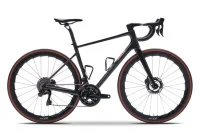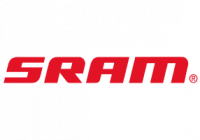Upgrade Ideas for your Bike this Winter
BIKE IMPROVEMENT SUGGESTIONS
(AKA -THINGS TO PUT ON THE HOLIDAY WISH LIST…)
By Jim Weaver, Service Manager
Fit Werx, Waitsfield, VT
With falling leaves and temperatures, many of us begin to turn our thoughts from cycling towards anticipating winter activities such as skiing. However, this is a good time to think about your bike while the past riding season is fresh in your memory. There are many things that most riders can do to improve the handling and ride quality of their bike. Improvements I have made over time to my own Parlee Z2 have greatly improved its ride qualities and I wanted to share some examples.
The place where the performance and ride of most bikes can be improved the most is in the wheels. As a general rule, bicycle manufacturers tend to skimp on the wheels they supply with their bikes in order to keep prices in check. These original equipment wheels are generally durable enough, but often heavy, and not very stiff. Very good quality wheels are available for reasonable prices. For example, the 2013 Mavic Ksyrium Elite, a substantial improvement over just about every bike manufacturer's original equipment wheelsets, is available for $799.00 a pair (including tires) and Easton EA70 wheels cost just $500.00 a pair (without) tires. Both of these wheelsets will shave about a pound of weight off the stock wheels found on many bikes, even some that cost well over $5000. Naturally, the higher up the product ladder you go, the greater the potential improvement and wheels like the Mavic Ksyrium SL or R-SYS, Zipp 101 or HED Ardennes SL shave more weight, increase stiffness, improve on bearing quality and can provide a wider and more comfortable rim in the case of the HED.
Even if you have nice wheels already, don’t discount the value of a wheel upgrade. Unless you have a wheel like a Lightweight, Reynolds RZR or Corima MCC already, you will be amazed at how much additional improvement is still available. Early this past summer I wrote about replacing my Mavic Ksyrium SL's with a set of Corima Viva "S" wheels, and how amazed I was at the improvement it made in smoothness and handling. This major improvement truly drove home how much wheels can transform the ride of any bike, even a Parlee Z2, already renowned and universally praised for its ride characteristics.
If smoothing out the ride of your bike is a goal, an inexpensive way to do just that is to simply replace your standard clincher tires with tubeless clincher tires. I installed Hutchinson Fusion 3 tubeless clincher tires on my Mavic Ksyrium SL's three years ago, and was immediately struck by the improvement in the ride. Those annoying cracks in the road that jar you with each hit were smoothed out to gentle bumps. Tubeless clincher tires offer a quality of ride that is much better than conventional clincher tires with tubes, approaching the smoothness of tubular tires. Tubeless clincher tires are installed with a liquid sealant inside the tire and this sealant helps seal the tire against the rim, preventing air loss. This sealant has the added benefit of sealing small punctures that would have caused a flat on a tire with a tube as well. So, smoother ride and fewer flats. What's not to like about that? This being said, tubeless clinchers are not for everyone, as they require a little bit of maintenance. For example, tubeless tires need to be kept inflated throughout the winter so they do not lose the seal with the rim. However, for many of our clients, these tires more than make up for a minor amount of additional maintenance in improved ride. Converting an existing set of wheels to tubeless clincher tires costs approximately $200.00, including the tires, sealant, and labor.
Another way to improve the ride quality of many bikes is to replace the alloy seatpost with a high quality carbon fiber seatpost. Recent independent testing showed that carbon fiber seatposts filter out road vibration and shock that alloy seatposts transmit directly into the rider’s seat. This is particularly true if your bike has a lot of seatpost showing above the frame or has a more rigid "zero setback" seatpost. While we are anticipating the new Zipp zero setback carbon post, our most popular zero setback carbon post is the Easton EC90 at $200.00, while high quality setback posts like the 3T Dorico Team start under $150. If your existing seatpost is metal, a relatively small investment can provide a nice reduction in shock and vibration while often further reducing weight.
Carbon fiber's advantage in filtering road shock and vibration is also available in handlebars and stems. This was driven home to me when I replaced my Deda alloy handlebars with 3T Ergonova Team carbon bars. The improvement, while certainly not as great as my Corima wheels, was not subtle. The bars filtered out much of the vibration and shock that had previously been transmitted directly from the front wheel to my hands. The carbon bars were also laterally stiffer than the alloy bars, as evidenced by far less handlebar flex; less flex means better control. High quality carbon fiber handlebars are available from many manufacturers, such as 3T, Zipp, FSA, and Easton, and generally cost from $250.00 to $400.00. Due to few shaping constraints, many carbon bars also offer ergonomic and fit benefits not found in alloy bars. While carbon fiber stems don’t save as much weight over alloy stems (some are actually heavier…) as carbon handlebars do over alloy bars, adding a high quality carbon fiber stem will only accentuate the improvement from a carbon handlebar. While not ultra-light, Zipp’s 145 carbon stem is one of our favorites as the I-Beam design has proven strong and exceptionally torsionally stiff. Another factor to remember is that alloy bars and stems slowly fatigue with use. I’ve seen alloy handlebars with significant pitting due to sweat and, in extreme cases, bars and stems can fail. Older bars and stems should be replaced, and carbon alternatives will offer great improvements while eliminating the long-term fatigue element inherent to alloy parts.
When considering any carbon fiber component, care must be taken to not let a lower price dictate your purchase; there are varying grades and qualities of carbon fiber and they do matter. Generally, more expensive offerings will be stronger, lighter, and stiffer, due to better design and engineering and the use of higher grade carbon fiber that contains less resin. Not all carbon fiber components are created equally!
Items such as these can truly transform a bike – they did for me. So, although winter is coming, the holidays are just around the corner, and you need to get started on that "Wish List"! Give us a call or drop an email if you want some help and suggestions for your specific bike and situation.









